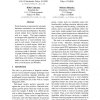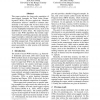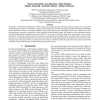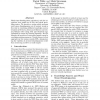72 search results - page 2 / 15 » Semi-supervised Word Sense Disambiguation Using the Web as C... |
EMNLP
2006
13 years 6 months ago
2006
Word clustering is important for automatic thesaurus construction, text classification, and word sense disambiguation. Recently, several studies have reported using the web as a c...
EMNLP
2004
13 years 6 months ago
2004
This paper explores the large-scale acquisition of sense-tagged examples for Word Sense Disambiguation (WSD). We have applied the "WordNet monosemous relatives" method t...
ICCS
2007
Springer
13 years 11 months ago
2007
Springer
In this paper, we propose an automatic text classification method based on word sense disambiguation. We use “hood” algorithm to remove the word ambiguity so that each word is ...
LREC
2010
13 years 6 months ago
2010
We propose a Word Sense Disambiguation (WSD) method that accurately classifies ambiguous words to concepts in the Associative Concept Dictionary (ACD) even when the test corpus an...
ACL
1998
13 years 6 months ago
1998
Word sense disambiguation algorithms, with few exceptions, have made use of only one lexical knowledge source. We describe a system which t)erforms word sense disambiguation on al...




